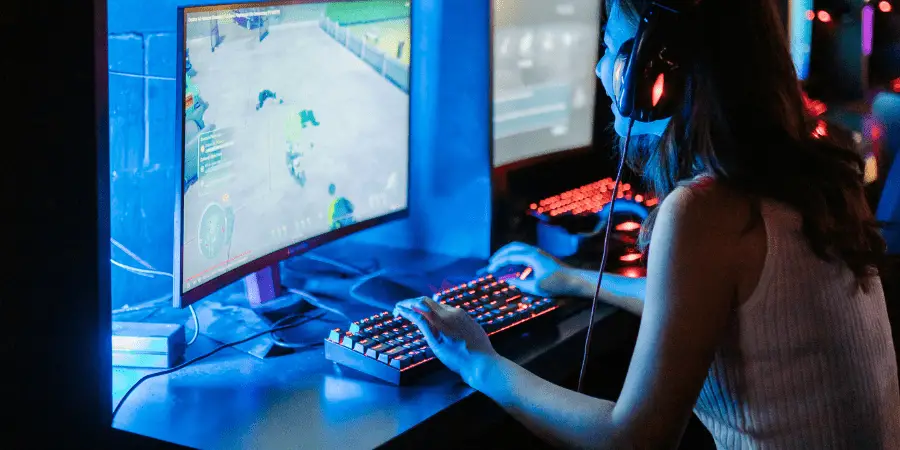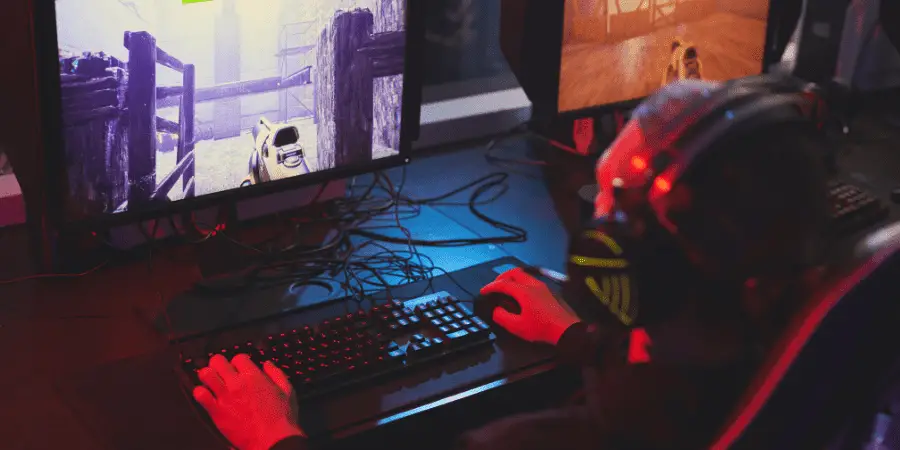Mobile gaming is an avenue which, until a few years ago was not considered actual gaming because of the limitations in technology which ultimately affected the meaning of gaming.
However, in recent years, we have moved way past basic arcade games and we have whole tournaments of competitive games like PUBG, Call of Duty Mobile, Fortnite etc.
So, if you also game on your phone, then you know that deciding the device on which you want to game is not easy. One looks at the whole spec sheet, the displays and everything else too. Display is something gamers do not compromise on, which has brought our attention to this debate. IPS vs LCD.
To put a long story short, AMOLED could be called out as a winner but there are some instances in which IPS LCD might give AMOLED very heavy competition. Thus, keep on reading this article to understand which display would be better for gaming and why.
What to Know?
- IPS LCD is the latest form of LCD. Also sometimes referred to as the Super LCD, it is a significant improvement of the LCD with VA or TN panels.
- AMOLED, is basically an OLED with a few modifications to make it even better.
- Gamers need the best display because if they are able to see better, they will be able to play better and have a good experience.
Let the Battle Begin

We are now going to compare the two types of panels used extensively in phones today, i.e., the IPS LCD and AMOLED. Comparing them on different aspects, you will be able to decide the phone with the best panel for gaming.
1. Technical Differences
First and foremost, it is essential to establish that both of these displays use different forms of technology. To have a basic understanding of how things work enables you to make an educated decision that is beneficial for you in the long run.
IPS LCD, abbreviated for In Plane Switching Liquid Crystal Display, is the best LCD there is. It uses a backlight source to illuminate the pixels in front that are ultimately going to produce the colors.
AMOLED, also known as Active Matrix Organic Light Emitting Diode, is a type of panel in which each pixel emits its own light and color. Made up of organic matter, the pixels or diodes in an AMOLED are able to be individually turned on or off, meaning that colors can be produced effectively.
Because of one single backlight in LCD, we can get problems like image bleeding which are not present in AMOLED because of how it works.
2. Colors
The second quality which is going to be compared here is the color. Colors are what make us actually want to see the screen. And if the display has amazing colors, the gaming experience is enhanced manifolds and thus AMOLED screen having a better color gamut is better than LCD.
The whites produced by AMOLED are perfect whites and the blacks are perfect blacks. This calls for production of exact colors which were intended by the developers themselves.
3. Contrast
Since in an IPS display, the blacks are not perfect blacks rather greyish blacks, we can see that the contrast ratio, although good, is not as good as AMOLED.
To give an analogy of being able to produce perfect blacks by AMOLED is like you wanting to stop a car, and it comes at rest. However, in the case of IPS, the car slows down too much maybe to 1 mph but never fully comes to rest.
These kinds of things make it difficult for LCD to produce amazing contrast. The reason behind it lies in the ability of the diodes in AMOLED to be able to turn off and on individually.
4. Viewing Angles
When using a smartphone or gaming on one, we know that the angle of our face with the smartphone is not consistent, instead it keeps on changing. Thus, if a panel had limited viewing angles on which the display looked perfect, using a smartphone would become difficult.
In both IPS and AMOLED, we have great viewing angles but AMOLED is far better in this regard too because the range is just unparalleled.
5. Refresh Rates
Until a few years ago, mobile phones were equipped with a standard 60 Hz screen whether IPS LCD or AMOLED. However, recently we have the option of a display with 90 or 120 Hz screen too. These options are available both in IPS LCD and AMOLED.
An increased refresh rate means that the gaming experience will be smoother. Although it translates to more power consumption but gamers would sacrifice fluidity and smoothness over a little more power consumption.
The comparison on this avenue depends on which models you are comparing but the easiest answer is that whichever screen type has the more refresh rate, that will provide you with a better gaming experience.
6. Brightness
IPS LCD wins here because the backlight source has great ability to increase the brightness as compared to AMOLED and even during high brightness levels, the colors remain almost consistent.
However, in a lot of AMOLEDS, with increased brightness levels a fading in colors for the increased brightness periods has also been observed.
7. Cost
IPS LCD has been here for a very long time and is easy for manufacturers to produce it where as AMOLED panel itself is a bit pricier. Thus, with mid range phones, it makes sense to go for IPS LCD because you are going to get a good quality LCD that means a good gaming time.
However, if you buy an AMOLED in mid range, it is probably not going to be the best one. However, if there is no price cap then choose the AMOLED and enjoy.
To sum everything up,
AMOLED is a newer technology which has been adopted by different phone manufacturers because it feels like the next correct step in mobile technology.
With its more vivid colors and excellent viewing angles, gaming on AMOLED phones is going to be really awesome. Although IPS LCD also provides a pretty good experience too with some people arguing it could be even better, it all comes down to your personal judgement.
Related Articles:
Is LED or OLED Better for Gaming?:(Helpful)

